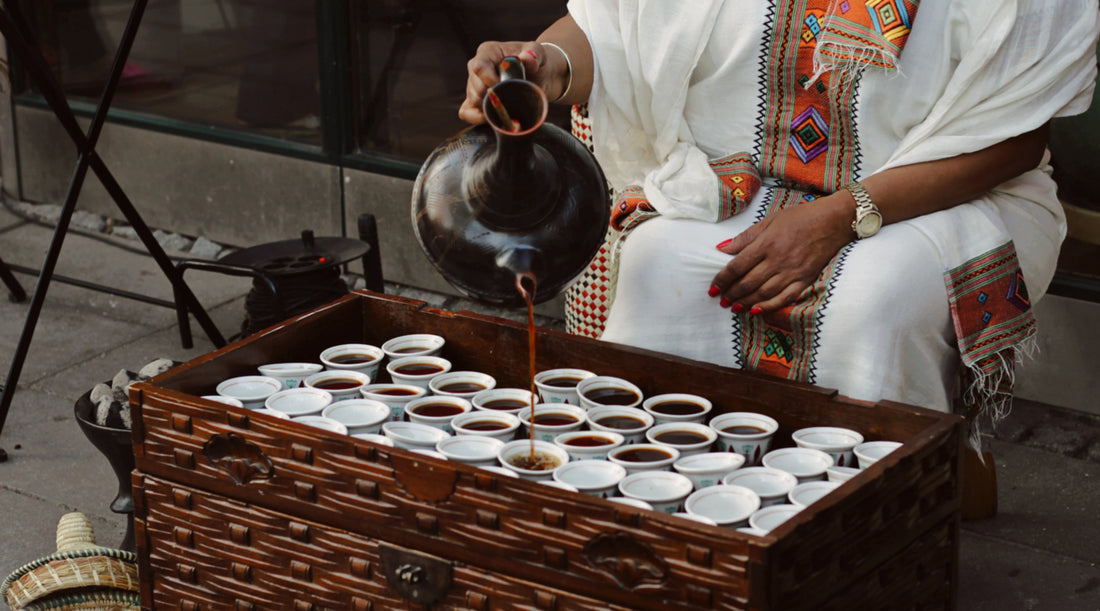
You need an exclusive invite to drink this coffee
LifestyleWhat is an Ethiopian coffee ceremony?
In Ethiopia, where the first ever coffee plant was said to be found, coffee is an extremely important part of their culture. Coffee ceremonies in Ethiopia are considered to be the most important social occasions in many villages, and it's a major sign of respect and friendship to be invited to one.
This isn't your average meetup for a cup of coffee, or "bunna," as it's called in Ethiopia. At an Ethiopian coffee ceremony, coffee beans are roasted right in front of you and boiled in a coffee vessel similar to the "ibriks," which is commonly used to make Turkish coffee.
The ceremony is conducted by the woman of the house or a younger woman in the household and is performed up to three times a day—meaning that anywhere from 6 to 9 hours is dedicated to coffee.
It begins by spreading fresh aromatic grasses and flowers across the floor and by burning incense to ward off evil spirits. A round-bottomed black clay coffee pot, known as a "jebena," is filled with water and placed over hot coals.
Next, a handful of green coffee beans are cleaned and heated in a pan over hot coals or a small fire. They are stirred and shaken to get rid of the husks and to make sure they're clean.
Once the beans are clean, they're slowly roasted right in front of you. They're constantly stirred or shaken to make sure they're roasted evenly, and they're usually roasted to a medium brown shade.
To grind the freshly roasted beans, the hostess will use a tool similar to a mortar and pestle. The mortar, a heavy wooden bowl, is called a "mukecha," and the pestle, called a "zenezena," is a wooden or metal cylinder with a blunt end. They're crushed to a coarse-ground coffee and are ready to be brewed.
By this time, the water in the jebena should be ready for brewing. The fresh ground coffee is added to the water, brought to a boil and removed from heat.
Once the coffee is ready to be served, the hostess will bring out a tray of small, handless ceramic or glass cups positioned very close together. The coffee is poured in a single stream from about a foot above, ideally filling the cups without having to stop the pour. This helps prevent coffee grounds from ending up in the cup.
In Ethiopian culture, it's common for the youngest child to serve the oldest guest the first cup of coffee. After that, the person preparing the coffee serves everyone else. Guests may add sugar if they like, but milk is not typically offered.
There are three servings similar to this, and in order are called "abol," "tona" and "baraka." Each serving is progressively weaker than the one before, and each cup is said to transform the spirt. The third serving, baraka, is considered to be a blessing to those who drink it.
Different villages may change different parts of the process. For instance, during the roasting process, the hostess might add cardamom, cinnamon or cloves to the mix. Others may filter the coffee to remove grounds. In the countryside, coffee may be served with salt instead of sugar.
Regardless of where you go in Ethiopia, you're going to want to be invited to one of these ceremonies. And if you're lucky enough to, it's a major honor.
[Featured Image Credit: Zeynep Sümer via Unsplash]
Related: How Turkish coffee is made
